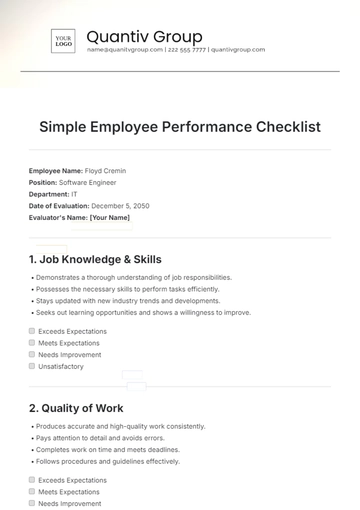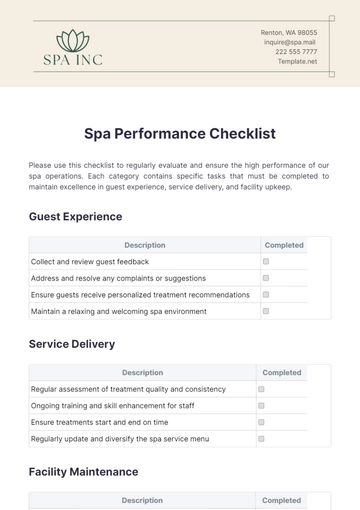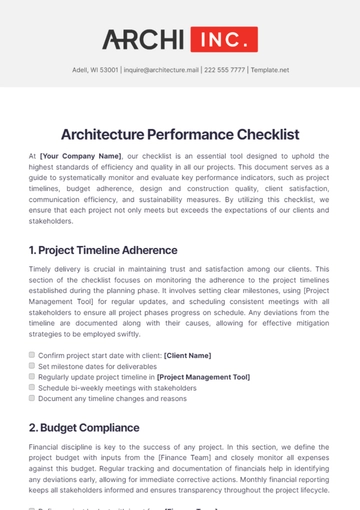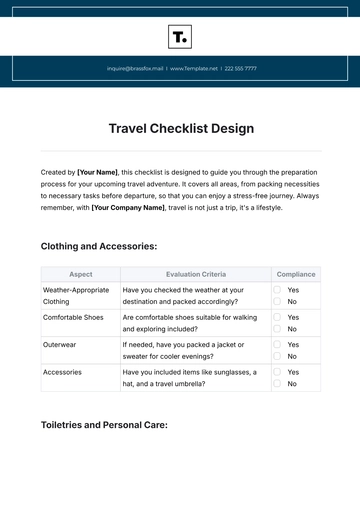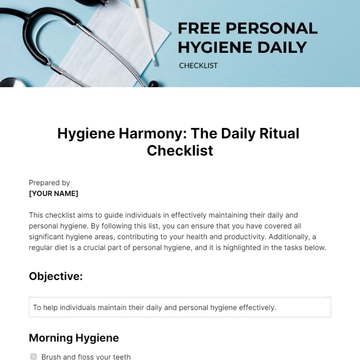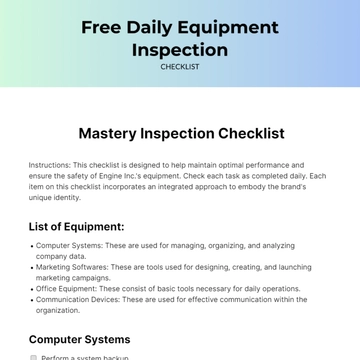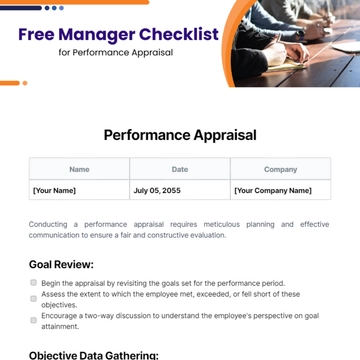Free User Story Checklist
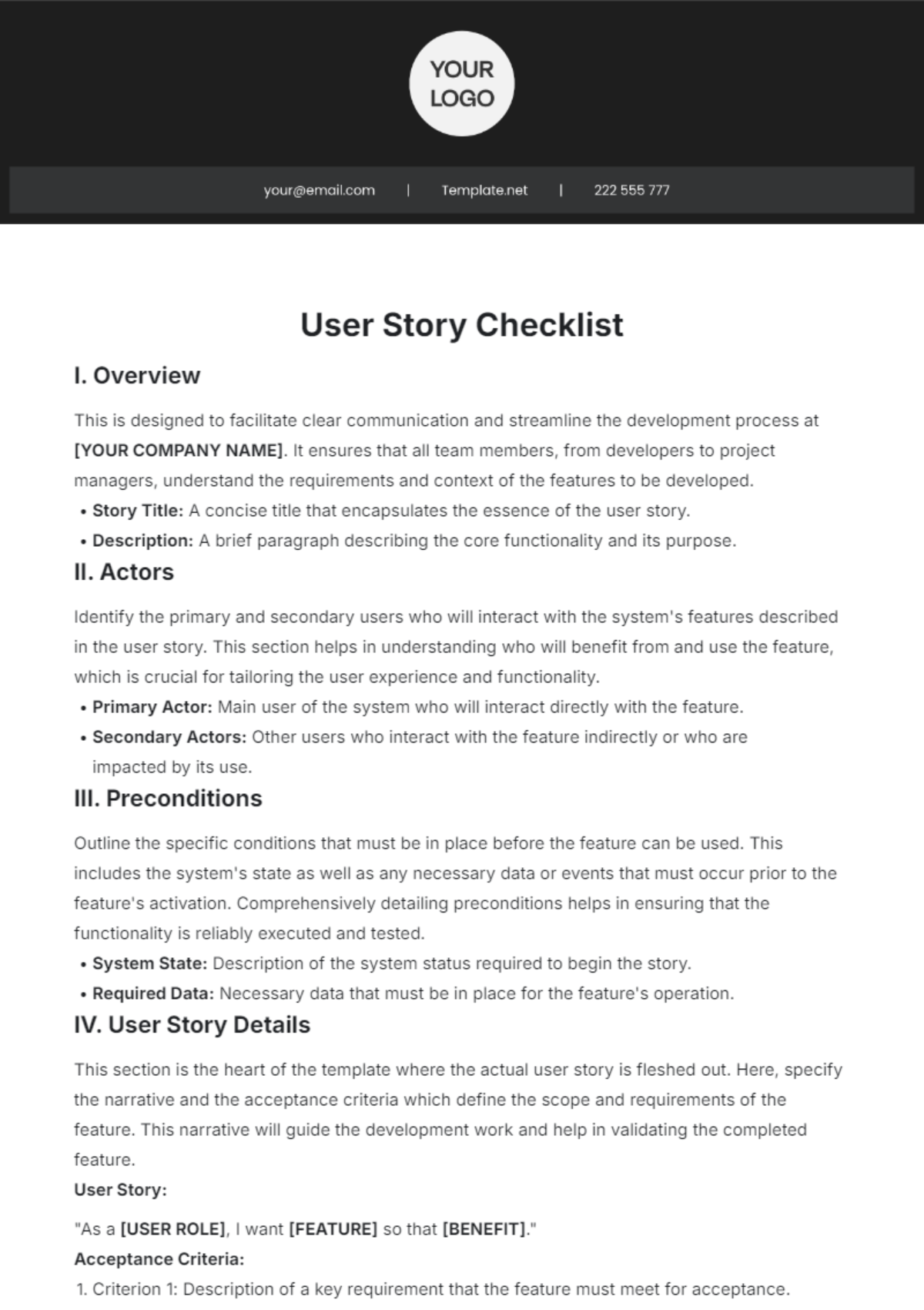
I. Overview
This is designed to facilitate clear communication and streamline the development process at [YOUR COMPANY NAME]. It ensures that all team members, from developers to project managers, understand the requirements and context of the features to be developed.
Story Title: A concise title that encapsulates the essence of the user story.
Description: A brief paragraph describing the core functionality and its purpose.
II. Actors
Identify the primary and secondary users who will interact with the system's features described in the user story. This section helps in understanding who will benefit from and use the feature, which is crucial for tailoring the user experience and functionality.
Primary Actor: Main user of the system who will interact directly with the feature.
Secondary Actors: Other users who interact with the feature indirectly or who are impacted by its use.
III. Preconditions
Outline the specific conditions that must be in place before the feature can be used. This includes the system's state as well as any necessary data or events that must occur prior to the feature's activation. Comprehensively detailing preconditions helps in ensuring that the functionality is reliably executed and tested.
System State: Description of the system status required to begin the story.
Required Data: Necessary data that must be in place for the feature's operation.
IV. User Story Details
This section is the heart of the template where the actual user story is fleshed out. Here, specify the narrative and the acceptance criteria which define the scope and requirements of the feature. This narrative will guide the development work and help in validating the completed feature.
User Story:
"As a [USER ROLE], I want [FEATURE] so that [BENEFIT]."
Acceptance Criteria:
Criterion 1: Description of a key requirement that the feature must meet for acceptance.
Criterion 2: Another specific condition that validates the feature's implementation.
V. Postconditions
Describe what the state of the system should be after the feature has been used, as well as any outputs or changes. Postconditions help in understanding the consequences and impacts of the feature, ensuring that it integrates seamlessly into the larger system without adverse effects.
System State: Expected status of the system following the feature's execution.
Outputs: Data or changes produced by the feature's operation.
VI. User Story Checklist
To ensure that user stories are comprehensive and all significant aspects are covered, this checklist should be reviewed and completed for each story:
The user story follows the correct format and contains all key sections.
All actors involved are identified and their roles are well-understood.
Preconditions and postconditions are well-defined.
Criteria are SMART: specific, measurable, achievable, relevant, and time-bound.
The feature was reviewed for improvements and validated against business needs.
- 100% Customizable, free editor
- Access 1 Million+ Templates, photo’s & graphics
- Download or share as a template
- Click and replace photos, graphics, text, backgrounds
- Resize, crop, AI write & more
- Access advanced editor
Introducing the User Story Checklist Template from Template.net. Crafted with precision for agile teams, this editable and customizable tool streamlines project planning. Seamlessly integrate user stories, prioritize tasks, and track progress effortlessly. With its AI Editable Tool, adaptability meets efficiency, ensuring your team stays ahead. Elevate your workflow today with this essential companion.
You may also like
- Cleaning Checklist
- Daily Checklist
- Travel Checklist
- Self Care Checklist
- Risk Assessment Checklist
- Onboarding Checklist
- Quality Checklist
- Compliance Checklist
- Audit Checklist
- Registry Checklist
- HR Checklist
- Restaurant Checklist
- Checklist Layout
- Creative Checklist
- Sales Checklist
- Construction Checklist
- Task Checklist
- Professional Checklist
- Hotel Checklist
- Employee Checklist
- Moving Checklist
- Marketing Checklist
- Accounting Checklist
- Camping Checklist
- Packing Checklist
- Real Estate Checklist
- Cleaning Checklist Service
- New Employee Checklist
- Food Checklist
- Home Inspection Checklist
- Advertising Checklist
- Event Checklist
- SEO Checklist
- Assessment Checklist
- Inspection Checklist
- Baby Registry Checklist
- Induction Checklist
- Employee Training Checklist
- Medical Checklist
- Safety Checklist
- Site Checklist
- Job Checklist
- Service Checklist
- Nanny Checklist
- Building Checklist
- Work Checklist
- Office Checklist
- Training Checklist
- Website Checklist
- IT and Software Checklist
- Performance Checklist
- Project Checklist
- Startup Checklist
- Education Checklist
- Home Checklist
- School Checklist
- Maintenance Checklist
- Planning Checklist
- Manager Checklist
- Wedding Checklist
- Vehicle Checklist
- Travel Agency Checklist
- Vehicle Inspection Checklist
- Interior Design Checklist
- Backpacking Checklist
- Business Checklist
- Legal Checklist
- Nursing Home Checklist
- Weekly Checklist
- Recruitment Checklist
- Salon Checklist
- Baby Checklist
- Equipment Checklist
- Trade Show Checklist
- Party Checklist
- Hospital Bag Checklist
- Evaluation Checklist
- Agency Checklist
- First Apartment Checklist
- Hiring Checklist
- Opening Checklist
- Small Business Checklist
- Rental Checklist
- College Dorm Checklist
- New Puppy Checklist
- University Checklist
- Building Maintenance Checklist
- Work From Home Checklist
- Student Checklist
- Application Checklist
